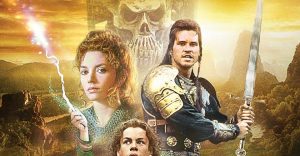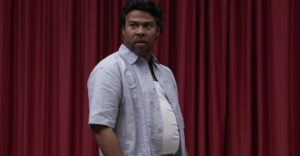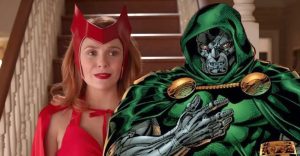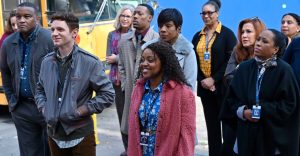10 Powerful Behind-The-Scenes Facts About 1917

Although it only went home with a couple of major awards at this year’s Oscars ceremony, Sam Mendes’ 1917 was unanimously praised as both a harrowing portrayal of the horrors of war and an unparalleled technical achievement. Mendes approached this movie – his best in years – with tremendous vision, working with cinematographer Roger Deakins and editor Lee Smith to make it look like it was shot in one continuous take.
Pulling off long takes like the ones stitched together in 1917 is incredibly tricky, and requires a ton of meticulous work in pre-production. So, here are 10 Powerful Behind-The-Scenes Facts About 1917.
10 1917 Is Based On Sam Mendes’ Grandfather’s Experiences In World War I

In the end credits of 1917, the film is dedicated to director Sam Mendes’ grandfather, Alfred H. Mendes. He was sent to fight in World War I as a Lance Corporal at the age of 17 in 1916 and had to carry messages across no man’s land, much like Schofield and Blake are asked to do in the movie.
The story isn’t directly a true story, but the script was pieced together from stories that the elder Mendes told his would-be filmmaker grandson when he was a child.
9 A Lot Of The Actors Had Worked Together Before

A lot of the actors that appear in 1917 had already worked together in previous projects. Mark Strong, Colin Firth, and Benedict Cumberbatch were all in the espionage thriller Tinker Tailor Soldier Spy. Firth and Strong both appear in the action-packed Kingsman franchise.
Cumberbatch played Sherlock Holmes and Andrew Scott played James Moriarty in BBC’s Sherlock. Scott and George MacKay were both in Pride. And Richard Madden and Dean-Charles Chapman, who play brothers in this movie, both played roles in HBO’s Game of Thrones.
8 Almost A Mile Of Trenches Were Dug For The Film

Long sections of 1917 take place in trenches. The production team had to dig out entirely new trenches to be used in the film, so that the trenches’ geography adhered to the events depicted in the script.
As a result, the crew ended up digging more than 5,200 feet of trenches (in other words, almost a mile) to be used during filming.
7 Roger Deakins Shot The Movie On An Arri Alexa LF Camera

At this year’s Academy Awards, 1917 cinematographer Roger Deakins enjoyed his second win for Best Cinematography (he got his first win two years ago for shooting Blade Runner 2049). Deakins shot 1917 on an Arri Alexa LF digital format camera, and it marked the first time in his decades-long career that he used it. He used a bunch of different lenses to capture different types of shots.
For example, an intimate character-focused scene would require a differently sized lens than a huge-scale action sequence. Deakins claims that 90% of the movie was filmed on 40mm lenses, while a 35mm lens was used in tunnel scenes and a 47mm lens was used for the river sequence.
6 Tom Holland Was Up For The Role Of Lance Corporal Blake

When Sam Mendes was first casting the lead roles in 1917, he considered Tom Holland for the part of Lance Corporal Blake. However, due to scheduling conflicts, he had to turn down the offer.
Presumably, starring in two Avengers movies and a Spider-Man movie in the space of just over a year precluded Holland from taking part in the 1917 shoot. His MCU co-star Benedict Cumberbatch managed to find the time to make a brief appearance towards the end of the movie.
5 A Cigarette Lighter Ruined Several Crucial Takes

There were many technical difficulties involved in shooting 1917, but one of the biggest problems turned out to be a cigarette lighter that wouldn’t ignite when the scene needed it to.
This caused many crucial takes to be ruined by the pesky lighter, and almost an entire day of filming was wasted as a result.
4 Schofield Bumping Into Soldiers During His Climactic Running Sequence Was Unscripted

In the climactic sequence, in which Lance Corporal Schofield runs across the battlefield and the camera tracks him, he bumps into other soldiers on two separate occasions. Both times, he falls to the ground, rolls over, and jumps back up to carry on running.
This wasn’t scripted; George MacKay accidentally bumped into a couple of the extras playing soldiers while they were filming and just played it off so he wouldn’t ruin the take. Bruce Fretts gave an extremely detailed account of this scene in a New York Times article published in January.
3 The Most Complicated Tracking Shots Were Shot From The Back Of A Motorcycle

A motorcycle was used to capture some of the most complicated tracking shots in the movie. For example, when Schofield walks up to the burning church and sees a nearby figure that turns out to be an enemy soldier, the camera operator was tracking George McKay on foot.
The operator hopped on the back of a motorcycle to suddenly start moving faster as the other soldier began chasing Schofield and the danger kicked in.
2 100 Extras Peed On The Tree Where The Final Scene Takes Place

According to an extra who worked on 1917, since the bathroom was so far away from the set, the extras who were working on the final scenes peed on a nearby tree in favor of walking all the way to the toilet.
There were about 100 of these extras peeing on the tree whenever they had to go. Little did they know, the final shot of the movie took place at that tree, with the star (George MacKay) sitting under it and looking out into the distance.
1 The Longest Uninterrupted Take In The Movie Is Eight And A Half Minutes Long

Director Sam Mendes wanted 1917 to look like one continuous shot, but obviously, the whole thing couldn’t actually be shot in a single take. So, Mendes and his editor Lee Smith had to hide cuts at various points like characters walking through dark hallways that fill the screen with black or panning the camera past an object in closeup.
According to Mendes, the shortest unbroken shot was just 39 seconds long, while the longest was eight and a half minutes long.
About The Author


















